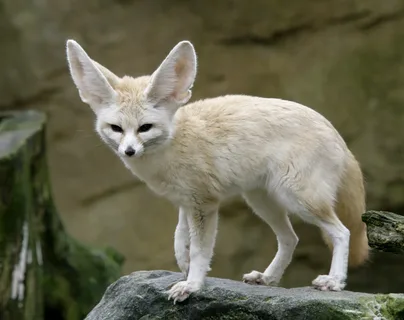Top Cutest Fennec fox In the World

The fox, with its oversized ears and playful spirit, is an enchanting creature that captivates the hearts wherever it goes. Here’s all you need to know about this desert dweller:
Appearance:
Tiny Titans: Fennec foxes are the smallest true foxes, standing only 14-16 inches tall with an additional 7-12 inch tail. They weigh a mere 2-3 pounds, making them the lightest canid species.
Big ears, for good reason: Their most striking feature is undoubtedly their immense ears, reaching up to 6 inches! These aren’t just for show; they help dissipate heat in the scorching desert and amplify sound for catching prey burrowing underground.
Sandy hues: Their fur is a beautiful pale cream color, blending perfectly with the desert sands. It helps reflect sunlight during the day and provides warmth at night
Habitat and Life Cycle:
Desert dwellers: Fennec foxes call the Sahara and other North African deserts their home. They dig elaborate burrows in the sand dunes for shelter and raising their young.
Nocturnal nomads: Mostly active at night, they spend their days snoozing in their burrows to escape the intense desert heat.
Pack mentality: Although primarily solitary foxes live in small social groups of around 10 individuals, with interconnected burrows fostering close family bonds. They communicate through barks, chirps, and yips.
Diet and Hunting:
Opportunistic eaters: They are omnivores, munching on insects, lizards, rodents, eggs, and even fruits and berries. Their keen senses of smell and hearing help them locate prey hidden in the sand.
Acrobatic hunters: Their flexible ankles and agility make them adept at navigating loose sand and chasing prey through burrows. They even jump high to catch insects in mid-air.
Conservation and Threats:
Vulnerable but resilient: Sadly, foxes are listed as Vulnerable by the IUCN, facing threats like habitat loss, hunting for fur, and competition from other predators. However, their adaptability and breeding success offer hope for their survival.
Conservation efforts: Habitat protection, education programs, and research initiatives are crucial to safeguarding their future.
Fun Facts:
Their large ears give them the second-best hearing (after bats!) of all land mammals.
They can climb trees, thanks to their sharp claws and flexible ankles.
They have thick fur on their paws, acting like mini snowshoes to prevent sinking in the sand.





